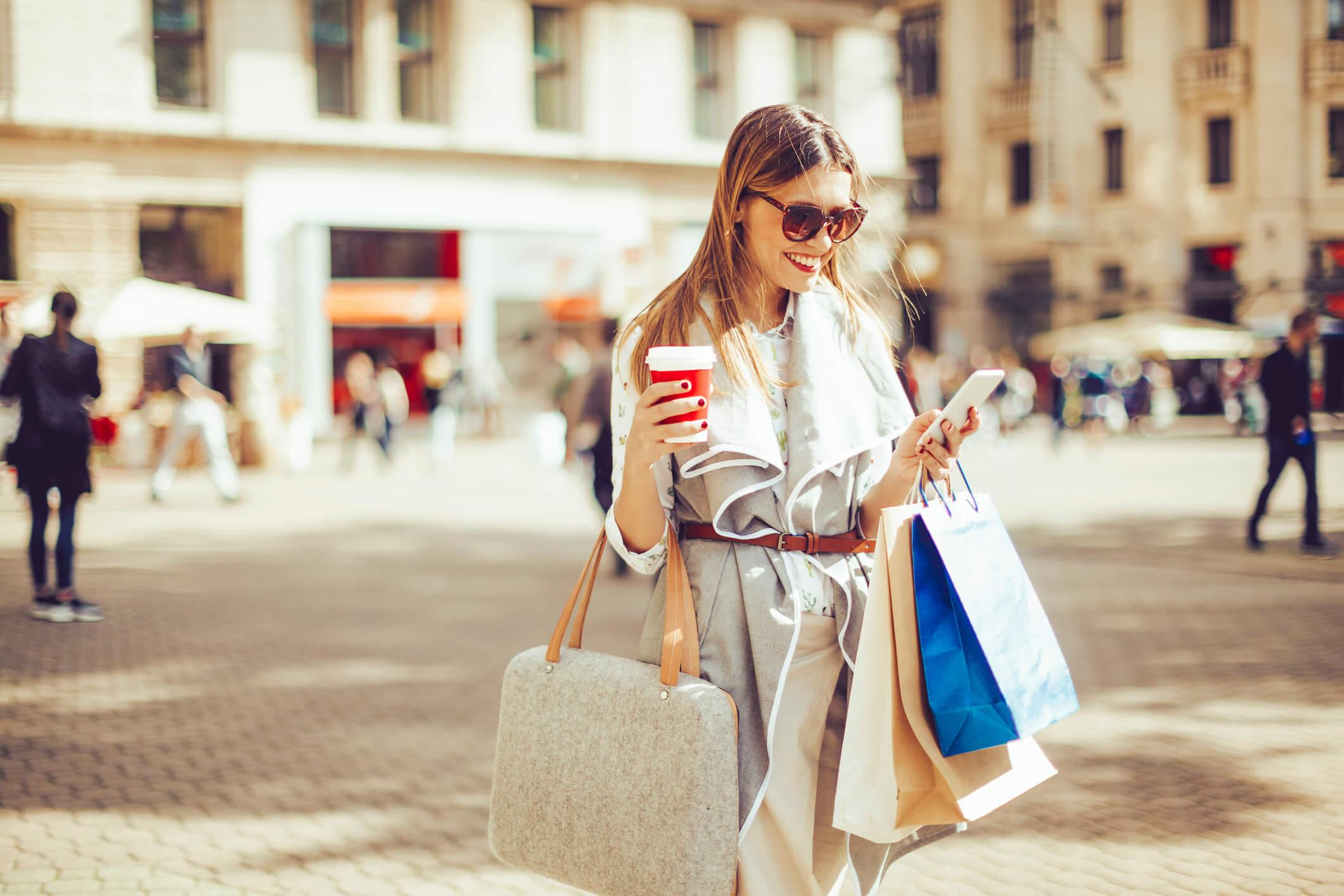“Exactly what I want“
Fashion Retail Trends 2018

Personalised offers characterise the trends in 2018
Configuring your own sports shoes, designing outfits according to your ideas, receiving individual offers based on your personal shopping profile – in 2018, the signs in fashion retail point to personalisation. In e-commerce, customers leave their preferences and enjoy the benefits of personalised offers and experiences. With new technologies, brick-and-mortar retailers are now also in a position to serve customers according to their preferences: Chatbots, Internet-of-Things (IoT), open IT platforms and augmented reality will be increasingly used in the stores in 2018 and beyond.
Trend #1 Personalisation
Consumers demand that brands fulfil their needs and even more: They got used to brands being able to predict and provide “personal” offers and services. According to the Boston Consulting Group, brands that create personalised experiences by integrating advanced digital technologies and proprietary data for customers are seeing revenue increase by 6 to 10%—two to three times faster than those that don’t.1 This is a very good reason for retailers to follow the personalisation trend. The increasing digital engagement of consumers facilitates the compilation of information on customers, their behaviour, tastes and preferences. The next important step for retailers will be to gain a “real-time view” of the consumer. The desire for personalisation encompasses both the instore and online experience and loses its potential if relevant customer data isn’t available in real-time throughout the retail organisation – including all channel partners. The fulfilment of this desire will drive the use of in-store technologies, IoT, as well as AI-based systems in retail. These technologies will enable retailers to achieve optimum level of personalisation. Consumers welcome personalisation efforts if their benefits are transparent and relevant and will reward retailers, both in terms of their sales behaviour but also by spreading the word.
Trend #2 Chatbots
Artificial Intelligence (AI) is continuing as a strong trend that is now materializing in very specific applications for retailers and customers. Interacting with customers and offering personalized services will bring AI powered chatbots onto the sales floor and add value through various features. Chatbots will make consumer engagement in brick-and-mortar stores possible at a much wider scale than what was achieved before. Answering as much as possible for shoppers through AI, chatbots support the sales personnel and bridge waiting times for customers until there´s a sales person available for individual service. Millennials might even prefer the interaction with the chatbot to being drawn into a more binding conversation with store associates. The customer will be able to interact with the digital sales assistant at any time via their smartphone and control the dialogue with the chatbot. These chatbots will bring a form of intelligence into the store that is well-known in online retailing, with one of them being filtered recommendations: e.g. popular articles, bestsellers, articles on sale or even product variants. Artificial intelligence, however, will not be limited to the chatbot itself. What will make it even more exciting is when chatbots communicate with other systems in the background, e.g. to check the actual article availability in real-time and compile data about customer cluster and their preferred article combinations. As a result, recommendations will become personal and meaningful.
Trend #3 Internet-of-Things (IoT)
IoT will continue to be one of the biggest topics for stores in 2018 and will increasingly provide tangible results for retailers and customers. Devices that communicate with each other in the store bring a number of advantages and insights. Gained data on popular items, product combinations, purchasing preferences, ‘tried-on- but- not- bought’ articles as well as article movements in the store can be intelligently used and transformed into data-driven recommendations for customers. IoT will also play a key role in driving consumer engagement in the store. The consumers’ new self-perception is taken into account through IoT technologies: enabling customers to become the main actor, brand ambassador, partner as well as creator of the future when shopping. Consumers’ request for more personalised offers will also be supported by the use of IoT in retail.
Trend #4 Augmented Reality
To engage customers emotionally and to enrich their experience of the brand, retailers will increasingly take advantage of augmented reality. These technologies will also support retailers in their approach to bridge the gap between e-commerce and brick-and mortar retail, offering consumers the seamless, non-siloed experience across all channels they are looking for. Retailers want to lure their online customers into their brick-and-mortar stores. In order to achieve this, retailers will increasingly use augmented reality and location-based services. Once a customer has arrived in the shopping mile, retailers can use 3D maps to “push” their locations onto the user’s smartphone. The consumers purchasing preferences are taken into careful consideration. In the next step, this service will also include article availabilities of preferred articles in the nearest stores. This promises great benefits for the customers, for example, finding stores (in pedestrian areas) that actually have the item they are looking for in the right size and colour. For this purpose, customers will be presented with real-time inventory data to create a positive online-offline shopping experience. As augmented reality rapidly improves, analysts predict that the retail industry may be one the biggest beneficiaries.2
Trend #5 Open Platforms
Retail IT landscapes of the future need to be as flexible as consumers are. To compete, retail companies must transition their IT systems to open platforms that enable rapid deployment of new solutions and make use of on-demand cloud services to create outstanding customer experiences. Open platforms will allow retailers to combine own software with third party applications as well as to switch services on or off as needed, leveraging the convenience of the cloud. They´ll also make business innovation much easier, faster and less expensive. While open platforms still have room to grow before being the standard in retail IT landscapes, the increasing demand for greater flexibility will drive the industry to embrace “openness” as a way to meet the needs of customers in the future.
